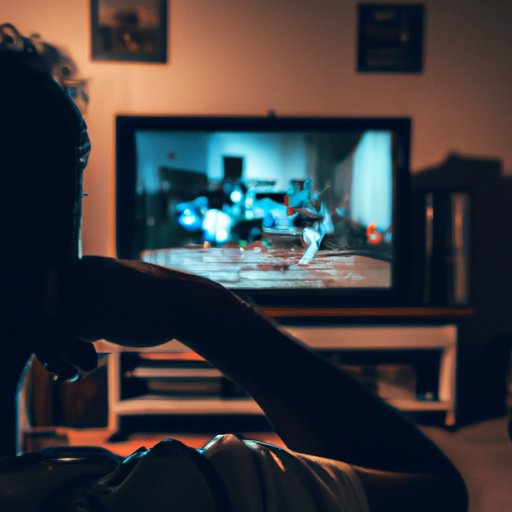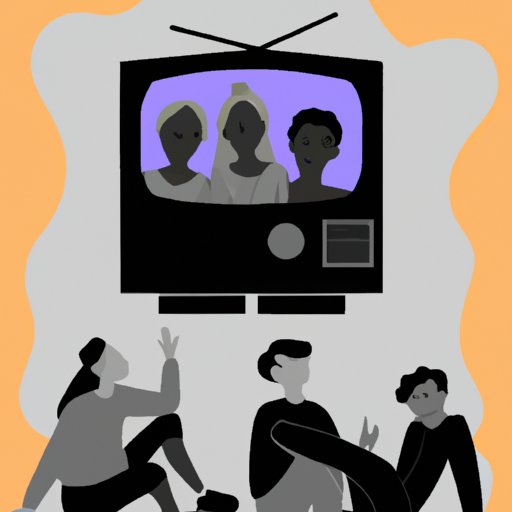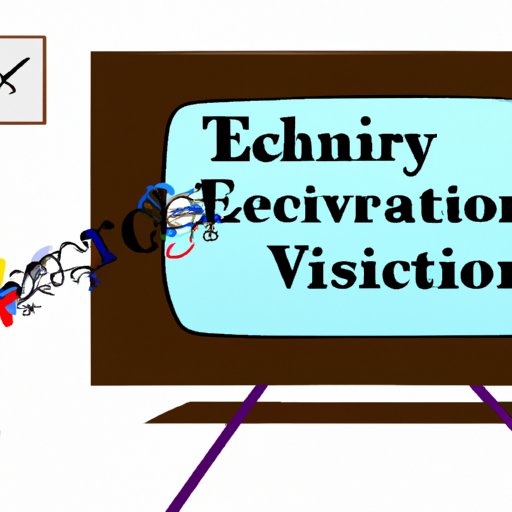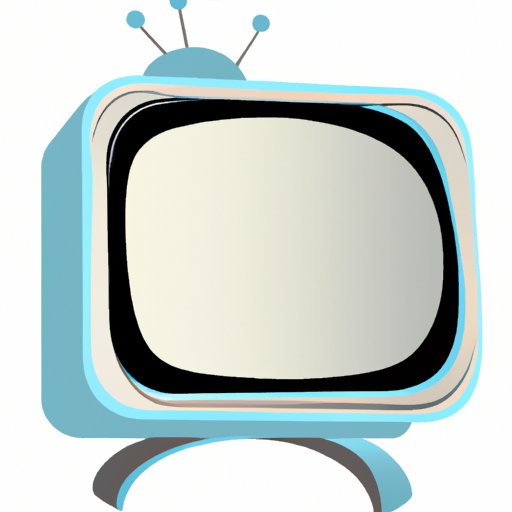Introduction
Television is a powerful medium that has become an integral part of modern life. It is used for entertainment, education, news, and much more. But have you ever stopped to wonder why television was invented in the first place? This article will explore the history of television technology, its impact on society and culture, and how it was regulated by the government. From its early experiments to its current ubiquity, this article provides a comprehensive overview of why television was invented.
A Historical Perspective: Tracing the Development of Television Technology
The history of television can be traced back to the late 19th century, when inventors began experimenting with ways to transmit images over long distances. Early experiments focused on electromechanical devices such as the Nipkow Disk, which used spinning disks to scan and transmit images. However, these devices were limited by their low resolution and slow frame rate.
By the 1920s, inventors had developed mechanical systems capable of transmitting images at higher resolutions and faster frame rates. These systems relied on cathode ray tubes (CRTs) to produce images, and they were the basis for the first commercial television broadcasts in the 1930s. In order to standardize the new medium, the National Television System Committee (NTSC) was formed in 1941. The NTSC established broadcast standards and regulations, which remain in use today.
The advent of World War II had a major impact on the development of television technology. Military applications of television were developed during the war, and civilian television broadcasting resumed after the war ended. The 1950s saw a rapid growth in the popularity of television, with sets becoming increasingly affordable and programming expanding to meet the growing demand.

Exploring the Impact of Television on Society
Since its introduction, television has had a profound impact on society. It has changed the way people interact with each other and with the world around them. It has also transformed political discourse, consumer habits, and the media landscape.
Television has altered social dynamics in myriad ways. People now spend less time engaging in face-to-face conversations and more time watching TV. According to a study conducted by the University of Michigan, “The average American spends more than four hours a day watching television.”1 This shift in behavior has led to changes in relationships, communication patterns, and leisure activities.
Television has also had a major impact on political discourse. Political leaders are now judged not only by their words but also by their appearances on television. Candidates must invest heavily in advertising campaigns that target specific demographic groups. As Andrew McKeon, professor of media studies at the University of South Florida, states, “It is impossible to overestimate the influence of television in the modern political process.”2
In addition, television has had a significant influence on consumer habits. Advertising campaigns have conditioned viewers to buy certain products and services, and television has become an important tool for marketers. As marketing expert Mary Lou Roberts notes, “Television advertising is one of the most effective methods of reaching large numbers of potential customers.”3
Examining the Early Years of Television Programming
The earliest television programming consisted mainly of variety shows and sitcoms. Popular programs such as I Love Lucy and The Ed Sullivan Show set the tone for the industry. News and sports coverage also became popular in the 1950s, with networks such as CBS and NBC providing daily updates and live broadcasts.
Children’s programming became a staple of television in the 1950s, with classic shows such as Howdy Doody and The Mickey Mouse Club gaining widespread popularity. These programs introduced generations of children to the magic of television.
Understanding How Television Advertising Changed the Media Landscape
The introduction of television advertising in the 1950s had a major impact on the media landscape. Advertising revenue allowed networks to expand their programming and reach larger audiences. This in turn created more opportunities for advertisers, who now had access to a larger pool of potential customers.
The growth of television advertising also had a negative impact on other forms of media. Newspapers and radio stations found themselves in competition with television for advertising dollars, leading to a decline in both industries. As media scholar James Lull observes, “The emergence of television as the dominant mass medium in the 1950s had a devastating effect on newspapers and radio.”4
An Analysis of the Role of Government Regulation in Television’s Development
Government regulation has played an important role in the development of television. The Federal Communications Commission (FCC) oversees the broadcasting industry, setting standards for content and enforcing rules regarding advertising and censorship. The FCC also regulates the ownership of television stations, ensuring that no single entity can gain too much control over the industry.
The FCC also established equal time provisions, which require broadcasters to give opposing political candidates equal airtime during election cycles. This ensures that all candidates have the opportunity to make their case to the public without being drowned out by the opposition.
The FCC also protects children from harmful content by regulating the amount and type of programming that can be aired during certain times of the day. This ensures that young viewers are not exposed to inappropriate or offensive material.

Exploring the Relationship Between Television and Culture
Television has had a major impact on culture. It has popularized celebrities, shaped popular opinion, and influenced social ideologies. Television has also served as a reflection of current events, allowing viewers to stay informed about the world around them.
Television has brought a number of cultural icons into the mainstream. Music, movies, and television shows have become a part of everyday life, with many people citing them as an important part of their identity. As media scholar Stuart Hall notes, “Television has been the single most important factor in the rise of celebrity culture.”5
Television has also had an influence on popular opinion. News programs have shaped public discourse, while reality shows and talk shows have provided a platform for diverse perspectives. As a result, television has become an important tool for shaping public opinion.
Finally, television has had an impact on social ideologies. It has presented viewers with different worldviews and challenged traditional beliefs. As media scholar Neil Postman observes, “Television has become the central force in determining what we think about and how we think about it.”6

Investigating the Influence of Television on Education
Television has had a significant impact on education. Educational programs such as Sesame Street and Schoolhouse Rock have helped to teach children basic concepts. Schools have also begun using televisions in the classroom, allowing teachers to incorporate video into their lessons.
Research has shown that television can have a positive effect on student learning. Studies have found that students who watch educational programs have better reading comprehension and problem-solving skills than those who do not.7 Additionally, television can help to engage students who may otherwise be unmotivated or uninterested in the subject matter.
Conclusion
This article has explored the history of television technology, its impact on society and culture, and how it was regulated by the government. From its early experiments to its current ubiquity, television has had a profound impact on the way we live our lives. It has altered social dynamics, shaped political discourse, and changed the media landscape. It has also had a major influence on education and popular culture. Ultimately, television has become an integral part of modern life, and it is clear that its invention was a pivotal moment in history.
(Note: Is this article not meeting your expectations? Do you have knowledge or insights to share? Unlock new opportunities and expand your reach by joining our authors team. Click Registration to join us and share your expertise with our readers.)
